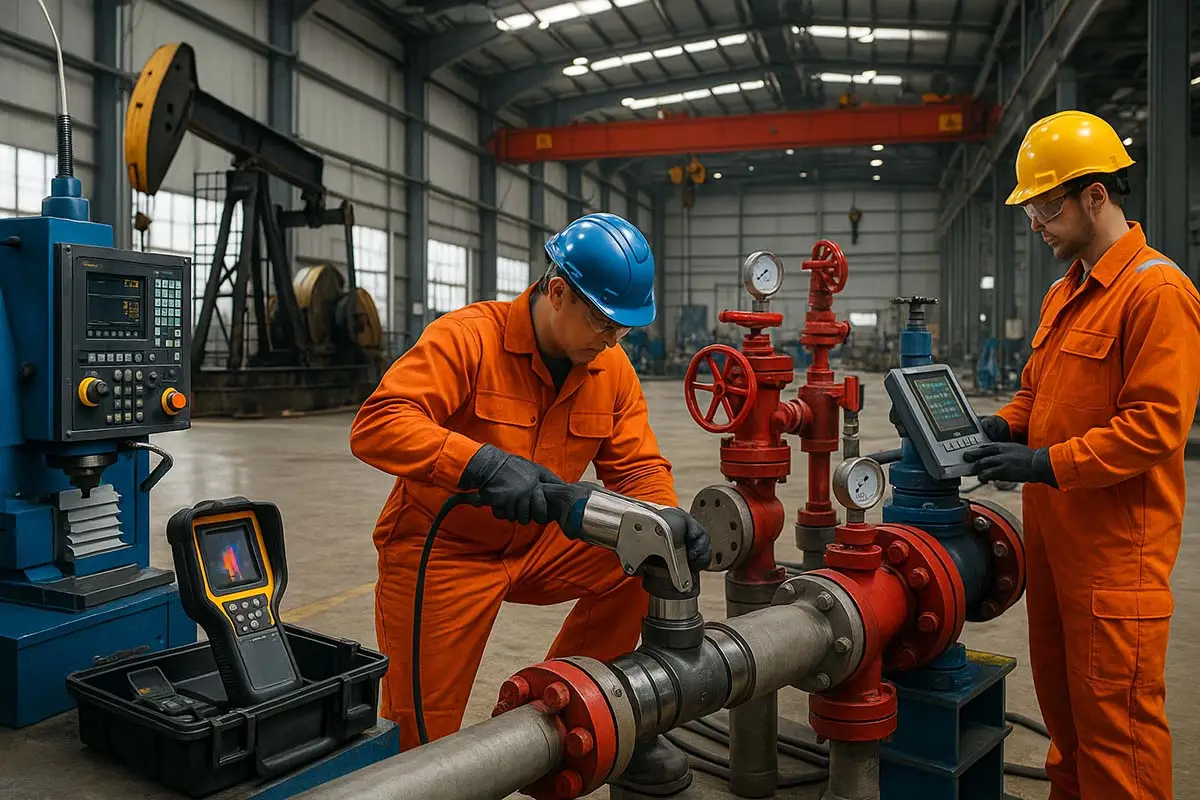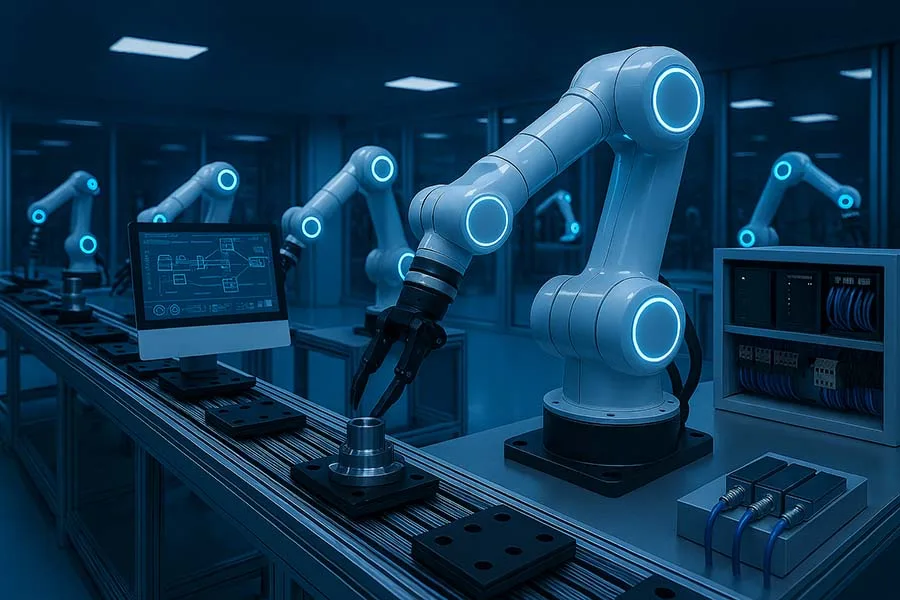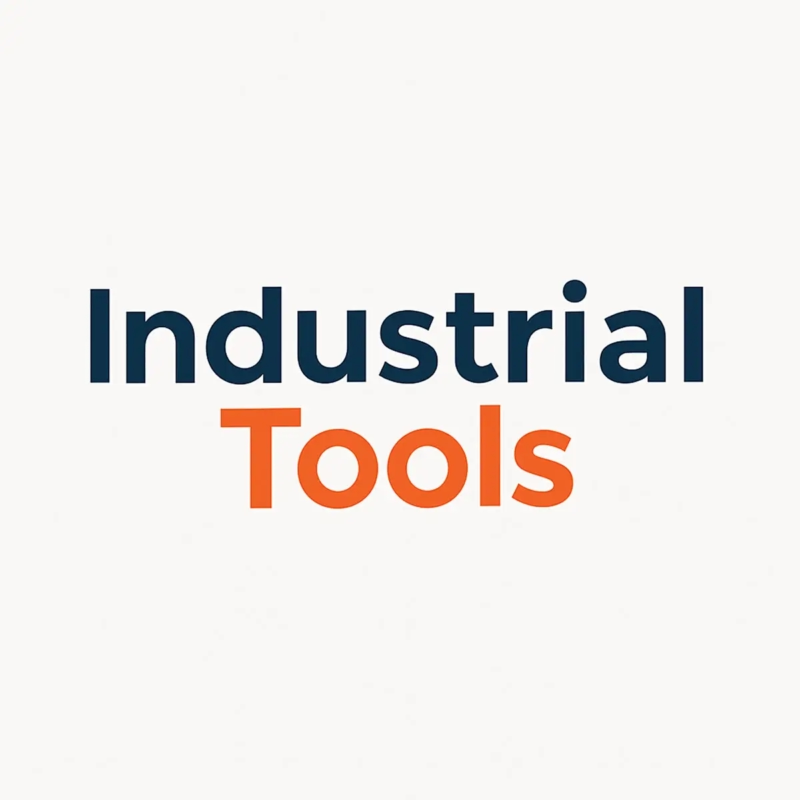Introduction: Why the Core Foundations Matter
Industry 4.0 is not just a buzzword—it’s a revolution in manufacturing and industrial processes. At its core, it relies on a tech stack of interconnected systems that make factories smarter, more efficient, and adaptive.
Understanding these foundational technologies is essential for manufacturers, engineers, and business leaders who want to stay competitive. Whether it’s optimizing operations, reducing downtime, or creating new business models, the foundations of Industry 4.0 make it possible.
In this article, we’ll dive deep into the core technological pillars of Industry 4.0, linking to practical applications, real-world examples, and other resources.
1. Industrial Internet of Things (IIoT): Connecting Machines, Data, and People
The Industrial Internet of Things (IIoT) is often called the backbone of Industry 4.0—and for good reason. By linking together sensors, machines, devices, and people, IIoT creates a living network where data flows in real time. This digital nervous system allows factories and supply chains to move beyond traditional automation and into a new era of intelligent, self-optimizing operations. Instead of machines working in isolation, IIoT enables them to communicate, coordinate, and adapt based on the information they continuously collect and share.
At the heart of IIoT are technologies such as smart sensors and actuators, edge devices, and cloud platforms that store and analyze vast amounts of data. Connectivity protocols like MQTT, OPC-UA, and 5G ensure that this data moves seamlessly across the ecosystem. The result is a powerful toolset that delivers real-world benefits: real-time monitoring of production lines, predictive maintenance that minimizes costly downtime, greater supply chain transparency, and data-driven decision-making at every level of industry. Simply put, IIoT lays the digital foundation that makes all other Industry 4.0 technologies possible.
2. Digital Twin Technology: From Concept to Real-World Applications
A digital twin is more than just a 3D model—it’s a dynamic, data-driven replica of a real-world asset, process, or system. Powered by sensors, connectivity, and advanced analytics, digital twins evolve in real time alongside their physical counterparts. They allow engineers, operators, and decision-makers to simulate scenarios, predict outcomes, and test improvements long before changes are made in the real world. In the context of Industry 4.0, digital twins have moved from being a futuristic concept to becoming an everyday tool that bridges the physical and digital worlds.
From optimizing factory layouts to predicting when a turbine will fail, digital twin technology is rewriting the rules of industrial efficiency. Manufacturers can now monitor assets remotely, explore “what if” scenarios without risking downtime, and continuously refine processes with unprecedented accuracy. As industries increasingly embrace digital transformation, the digital twin has proven itself not as a luxury, but as a core foundation of smart manufacturing and sustainable growth.
3. Robotics and Automation: The Heart of Smart Manufacturing
Robotics and automation are at the very core of smart manufacturing, driving the speed, precision, and consistency that Industry 4.0 demands. Once limited to repetitive, pre-programmed tasks, today’s industrial robots are flexible, collaborative, and deeply connected to wider digital ecosystems. Powered by IIoT data, artificial intelligence, and advanced sensing, these systems are no longer just tools for efficiency—they are strategic enablers of innovation and competitiveness.
From robotic arms that assemble complex electronics with microscopic precision to autonomous mobile robots that streamline logistics, automation is transforming how factories operate. Modern robots don’t simply replace human labor; they augment it by taking over dangerous, repetitive, and high-precision tasks, freeing people to focus on higher-value problem solving. By integrating robotics with other Industry 4.0 technologies, manufacturers gain a production environment that is not only faster and safer, but also smarter and more adaptive to real-world demands.
4. Artificial Intelligence (AI) and Machine Learning: Smarter Manufacturing
If robotics is the muscle of Industry 4.0, then artificial intelligence (AI) and machine learning (ML) are its brain. These technologies give machines the ability to learn, adapt, and make informed decisions based on the constant flow of industrial data. While AI provides the overarching intelligence for problem-solving and decision-making, ML dives deeper into patterns and predictions, uncovering insights that humans might miss. Together, they elevate manufacturing from being automated to being truly intelligent.
In practice, AI and ML power a wide range of Industry 4.0 applications: predictive maintenance that stops breakdowns before they happen, real-time quality control using computer vision, supply chain optimization through smarter forecasting, and even adaptive production lines that reconfigure themselves on demand. By embedding intelligence into every layer of operations, AI and ML are not just making manufacturing smarter—they’re making it more resilient, efficient, and future-ready.
5. Augmented Reality (AR) and Virtual Reality (VR): The Human-Tech Interface
In the world of Industry 4.0, machines may be smarter than ever, but people remain at the center of innovation. Augmented reality (AR) and virtual reality (VR) form the critical human-tech interface, helping workers see, understand, and interact with complex data in intuitive ways. AR overlays digital information directly onto real-world environments, guiding technicians through repairs or quality checks with step-by-step visual cues. VR, on the other hand, immerses users in fully simulated environments where they can train, design, or test processes without risk or downtime.
Far from being futuristic gadgets, AR and VR are already proving their value on the factory floor. Engineers use VR to prototype equipment before it’s built, reducing costly design errors, while AR enables real-time support for technicians in the field, boosting accuracy and safety. By making digital systems more human-centric, these technologies not only improve efficiency but also empower workers to collaborate more effectively with the intelligent machines around them. In short, AR and VR don’t replace people in Industry 4.0—they give them superpowers.
6. Data Analytics and Cloud Computing: From Raw Data to Insights
In Industry 4.0, raw data is everywhere—machines, sensors, supply chains, and even workers generate a constant digital stream. But without the right tools, this flood of information is just noise. That’s where data analytics and cloud computing step in. Together, they transform scattered data points into meaningful insights that drive smarter decisions, faster problem-solving, and more efficient operations.
Cloud platforms provide the scalable infrastructure to store and process massive volumes of industrial data, while analytics tools extract patterns, predict outcomes, and uncover hidden opportunities. From real-time dashboards on the factory floor to AI-driven forecasts at the executive level, these technologies bridge the gap between information and action. In short, data analytics and cloud computing are the engines that turn Industry 4.0’s data-rich environment into real business value.
7. Cybersecurity: Protecting the Smart Factory
As factories grow smarter, they also become more vulnerable. The same connectivity that makes Industry 4.0 powerful—linking sensors, machines, cloud platforms, and people—also creates new opportunities for cyber threats. Cybersecurity in the smart factory is no longer an afterthought; it is a critical foundation. Without it, the advantages of IIoT, digital twins, and data analytics could be undermined by data breaches, ransomware, or system disruptions.
Protecting the smart factory requires a layered approach that goes far beyond installing firewalls. It means safeguarding every connected device, monitoring data flows in real time, and training people to recognize and respond to risks. From endpoint protection on factory sensors to encrypted communications across cloud platforms, cybersecurity ensures that the digital backbone of Industry 4.0 remains reliable, resilient, and secure.
8. Integration and Interoperability: Making It All Work Together
Integration and interoperability are the unsung heroes of Industry 4.0. You can have smart sensors, predictive AI, agile robots, and even immersive AR/VR systems—but unless these technologies speak the same language, your “smart factory” risks becoming just a collection of disconnected gadgets. True Industry 4.0 is only possible when machines, systems, and software communicate seamlessly across the production ecosystem.
From legacy equipment to cutting-edge platforms, interoperability ensures that every component contributes to a unified digital environment. By breaking down silos and creating standardized connections, integration unlocks efficiency, flexibility, and scalability. Simply put: Industry 4.0 isn’t about isolated technologies—it’s about making them work together.
9. Benefits of Understanding the Core Foundations
In the fast-paced world of modern industry, success is no longer defined solely by having the newest machines or software. True operational excellence comes from a deep understanding of the core foundations: People, Processes, and Technology. These three pillars form the backbone of efficient, innovative, and adaptable industrial operations. Companies that integrate them effectively experience smoother workflows, higher productivity, and a stronger competitive edge.
Understanding these foundations is more than a checklist—it’s about creating synergy between human talent, structured processes, and technological tools. When aligned, they reinforce each other, enabling organizations to tackle complex challenges, reduce downtime, and drive sustainable growth. This article explores each foundation in depth, highlights their benefits, and shows how integrating them can revolutionize your operations..
10. Challenges and Barriers
Industry 4.0 promises a new era of manufacturing—smart factories, connected machines, real-time data analytics, and AI-driven processes. Yet, while the vision is exciting, the path to implementation is not without its hurdles. From technology adoption to workforce readiness, companies face a variety of challenges and barriers that can slow down or even derail their digital transformation journey.
Understanding these obstacles is crucial. Not only does it prepare businesses for realistic planning, but it also enables them to implement proactive strategies that reduce risks and maximize ROI.
11. The Future: Towards Industry 5.0
Industry 5.0 focuses on human-centric manufacturing, where smart systems and humans collaborate even more closely. Foundations built in Industry 4.0—IIoT, AI, digital twins, and robotics—will make this transition seamless.
Industry 4.0 FAQ
✅ Call to Action: Explore the rest of our Industry 4.0 cluster to see how each technology works in practice: IIoT, Digital Twins, Robotics, AI. Comment below with your experience or questions about smart factory implementation.





